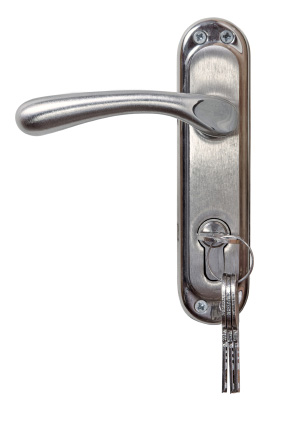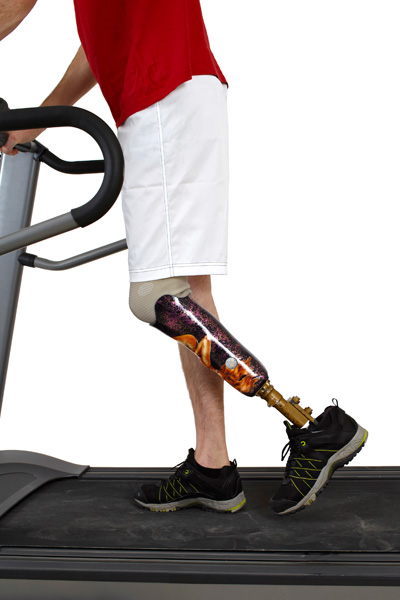Disability and Health Inclusion Strategies
Posted By CDC

Inclusion of people with disabilities into everyday activities involves practices and policies designed to identify and remove barriers such as physical, communication, and attitudinal, that hamper individuals’ ability to have full participation in society, the same as people without disabilities. Inclusion involves:
- Getting fair treatment from others (nondiscrimination);
- Making products, communications, and the physical environment more usable by as many people as possible (universal design);
- Modifying items, procedures, or systems to enable a person with a disability to use them to the maximum extent possible (reasonable accommodations); and
- Eliminating the belief that people with disabilities are unhealthy or less capable of doing things (stigma, stereotypes).
Disability inclusion involves input from people with disabilities, generally through disability-focused and independent living organizations, in program or structural design, implementation, monitoring, and evaluation.1
National Policy and Legislation
Three federal laws protect the rights of people with disabilities and ensure their inclusion in many aspects of society:
- Section 504 of the Rehabilitation Act of 1973
- The Americans with Disabilities Act (ADA) of 1990, which was followed by the ADA Amendments Act of 2008 in an attempt to restore the original intent of the legislation
- The Patient Protection and Affordable Care Act in 2010
Section 504 of the Rehabilitation Act
Section 504 of the Rehabilitation Act of 1973external icon is a federal law that protects individuals from discrimination based on disability. The nondiscrimination requirements of the law apply to employers and organizations that receive financial assistance from federal departments or agencies. Section 504 forbids organizations and employers from denying individuals with disabilities an equal opportunity to receive program benefits and services. It defines the rights of individuals with disabilities to participate in, and have access to, program benefits and services.
Americans with Disabilities Act
The Americans with Disabilities Act (ADA) of 1990external icon, as amended, protects the civil rights of people with disabilities, and has helped remove or reduce many barriers for people with disabilities. The legislation required the elimination of discrimination against people with disabilities. The ADA has expanded opportunities for people with disabilities by reducing barriers, changing perceptions, and increasing participation in community life.
ADA guarantees equal opportunity for individuals with disabilities in several areas:
- Employment
- Public accommodations such as restaurants, hotels, theaters, doctors’ offices, pharmacies, retail stores, museums, libraries, parks, private schools, and day care centers
- Transportation
- State and local government services
- Telecommunications such as telephones, televisions, and computer
People with Disabilities and the Patient Protection and Affordable Care Act
On March 23, 2010, President Obama signed into law the Patient Protection and Affordable Care Act,external icon commonly referred as ACA.
For people with disabilities, the ACA:
- Provides more health care choices and enhanced protection for Americans with disabilities;
- Provides new health care options for long-term support and services;
- Improves the Medicaid home- and community-based services option;
- Provides access to high-quality and affordable health care for many people with disabilities;
- Mandates accessible preventive screening equipment; and
- Designates disability status as a demographic category and mandates data collection to assess health disparities.
Visit the Affordable Care Act for Americans with Disabilities pdf icon[153 KB, 2 pages]external icon to learn more.
Universal Design
The intent of universal design is to simplify life for everyone by making products, communications, and the physical environment more usable by as many people as possible at little or no extra cost. Universal design benefits people of all ages and abilities. The Center for Universal Design at North Carolina State Universityexternal icon has developed seven principles for universal design:
- Equitable use: The design is useful and marketable to people with diverse abilities.
For example:
- Power doors with sensors at entrances that are convenient for all users.
- Flexibility in use: The design accommodates a wide range of individual preferences and abilities.
For example:
- An automated teller machine (ATM) that has enhancements in the way it looks, feels, or sounds so that people with vision or hearing impairments can use it;
- A tapered card opening for ease in inserting or removing a bank card; and
- A palm rest to aid those with arm mobility or strength limitations.
- Simple and intuitive use: Use of the design is easy to understand, regardless of the user’s experience, knowledge, language skills, or current concentration level.
For example:
- Including an instruction manual with clear drawings and no text.
- Perceptible information: The design communicates necessary information effectively to the user, regardless of the current light, visual, or sound conditions or the person’s abilities to read, see, or hear.
For example:
- Alarm systems that can be both seen and heard; and
- Routinely making captioning available in all television or video presentations.
- Tolerance for error: The design minimizes hazards and the harmful consequences of accidental or unintended actions.
For example:
- Ground-fault interrupter (GFI) electrical outlet that reduces risk of shock in bathrooms and kitchens.
- Low physical effort: The design can be used efficiently and comfortably with minimum fatigue.
For example:
- Easy-to-use handles that make opening doors easier for people of all ages and abilities.
- Size and space for approach and use: Appropriate size and space is provided for approach, reach, manipulation, and use regardless of person’s body size, posture, or mobility.
For example:
- Counters and service windows are low enough for everyone to reach, including people who use wheelchairs; and
- Curb cuts or sidewalk ramps, essential for people in wheelchairs, but are used by all people, and also convenient for people pushing baby strollers.

Accessibility
Accessibility is when the needs of people with disabilities are specifically considered, and products, services, and facilities are built or modified so that they can be used by people of all abilities. Here are a few examples of accessibility:
- Parking spaces are close to entrances
- Floor spaces and hallways are free of equipment and other barriers
- Staff and healthcare professionals can use sign language or have access to someone who can use sign language

Reasonable Accommodations
Accommodations are alterations that have been made to items, procedures, or systems that enable a person with a disability to use them to the maximum extent possible. An accommodation can also be a modification to an existing environment or process to increase the participation by an individual with an impairment or activity limitation. Braille, large print, or audio books are examples of accommodations for people who are blind or who have visual limitations otherwise. For people who are deaf or who have difficulty hearing, accommodations may take the form of having an American Sign Language interpreter available during meetings or presentations, or exchanging written messages. Communication accommodations do not have to be elaborated, but they must be able to convey information effectively.
Assistive Technology
Assistive technologies (ATs) are devices or equipment that can be used to help a person with a disability fully engage in life activities. ATs can help enhance functional independence and make daily living tasks easier through the use of aids that help a person travel, communicate with others, learn, work, and participate in social and recreational activities. An example of an assistive technology can be anything from a low-tech device, such as a magnifying glass, to a high tech device, such as a computer that talks and helps someone communicate. Other examples are wheelchairs, walkers, and scooters, which are mobility aids that can be used by persons with physical disabilities. Smartphones have greatly expanded the availability of assistive technology for people with vision or hearing difficulties, or who have problems with effectively communicating their thoughts because of mental or physical limitations.
For more information: Access & Independence through Technologyexternal icon.

Independent Living
Independent living is about people with disabilities having voice, choice, and control over their everyday lives. The person may not need any assistance or might need help with only complex issues, such as managing money, rather than day-to-day living skills. Whether an adult with disabilities continues to live at home or moves into the community depends in large part on his or her ability to manage everyday tasks with little or no help. For example is the person able to clean the house, cook, shop, and pay bills, or able to use public transportation?
For more information:
- Centers for Independent Livingexternal icon
- Build or Modify Your Home for Independencepdf iconexternal icon
- U.S. Department of Housing and Urban Development: Information for People with Disabilitiesexternal icon
- CDC Disability and Health Information for Specific Groups
Assisted Living
Assisted living is for adults who need help with everyday tasks. They may need help with dressing, bathing, eating, or using the bathroom, but they don’t need full-time nursing care. Some assisted living facilities are part of retirement communities. Others are near nursing homes, so a person can move easily if needs change.
For more information:
- National Association of States United for Aging and Disabilities (NASUAD)external icon
- Administration for Community livingexternal icon
- Eldercare Locatorexternal icon
- Nursing Homes and Assisted Living (Long-term Care Facilities [LTCFs])
Communicating With and About People with Disabilities
Disability is part of the human experience, but sometimes people use words or phrases that are insensitive and do not promote understanding, dignity, and respect for people with disabilities. More often than not, this is not intentional, but can be hurtful just the same. Learn how to communicate with and about people with disabilities using people-first language and other helpful tips.
Source: Communicating With and About People with Disabilities Fact Sheet
About This Article:
A Life Worth Living has copied the content of this article under fair use in order to preserve as a post in our resource library for preservation in accessible format. Explicit permission pending.
Link to Original Article: https://www.cdc.gov/ncbddd/disabilityandhealth/disability-strategies.html

